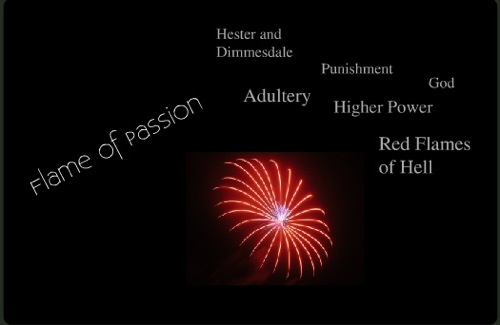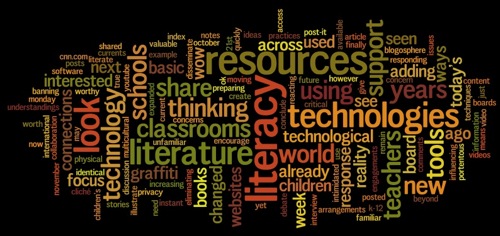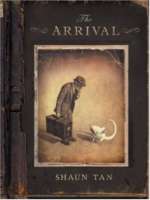by Janine Schall, University of Texas-Pan American, Edinburg, TX
 We know that collaboration can help students create more sophisticated responses to literature. As students think together through oral or written dialogue they hear multiple perspectives, challenge others’ thinking, and revise initial responses. While children have always talked with friends about the books they read, today reading is increasingly social in new ways. Informal talk on the playground is being supplemented with a variety of online resources. For example, a very quick Google search brought up multiple online sites for fans of the Harry Potter series, including a message board, wiki, and fanfiction site.
We know that collaboration can help students create more sophisticated responses to literature. As students think together through oral or written dialogue they hear multiple perspectives, challenge others’ thinking, and revise initial responses. While children have always talked with friends about the books they read, today reading is increasingly social in new ways. Informal talk on the playground is being supplemented with a variety of online resources. For example, a very quick Google search brought up multiple online sites for fans of the Harry Potter series, including a message board, wiki, and fanfiction site.
These sites are sometimes run by a publisher or author, but they are often started by children and adolescents who want to share a reading experience with others. These children are building, maintaining, and moderating the sites. In addition, they are contributing a tremendous amount of content through writing, artwork, and video.
It is clear that children love to talk about books with other children in these informal, out-of-school contexts. How can teachers harness some of that impulse towards social interaction to support thinking about literature in school as well? In this post I will briefly discuss three online possibilities that can help with this: social networking, wikis, and voicethread.
Continue reading →







 The IBBY Congress offered multiple opportunities for learning about the reading experiences offered to children in different parts of the world. One of those experiences that was the focus of lively discussions involved children reading wordless texts in the project, “Visual journeys: Understanding immigrant children’s responses to the visual image in contemporary picture books.” Dr. Evelyn Arizpe, from the University of Glasgow, coordinator of the project, Dr Cecilia Silva-Díaz and Brenda Bellorín, from the Universitat Autonoma de Barcelona, and myself from The University of Texas at Austin, shared the power of the visual image in the graphic novel
The IBBY Congress offered multiple opportunities for learning about the reading experiences offered to children in different parts of the world. One of those experiences that was the focus of lively discussions involved children reading wordless texts in the project, “Visual journeys: Understanding immigrant children’s responses to the visual image in contemporary picture books.” Dr. Evelyn Arizpe, from the University of Glasgow, coordinator of the project, Dr Cecilia Silva-Díaz and Brenda Bellorín, from the Universitat Autonoma de Barcelona, and myself from The University of Texas at Austin, shared the power of the visual image in the graphic novel  The realization that other young citizens of the global community have messages of empowerment, or agency, to share with children of the western world is perhaps one of the most important roles of international literature. The literature, in which the main characters reveal agency through identity, voice, decision-making, and taking action according to their learned perceptions of a situation, is one way to accomplish that exchange of ideas. That was one of the outcomes for individuals who attended the IBBY Congress last month as active participants in IBBY’s role of building bridges across global cultures.
The realization that other young citizens of the global community have messages of empowerment, or agency, to share with children of the western world is perhaps one of the most important roles of international literature. The literature, in which the main characters reveal agency through identity, voice, decision-making, and taking action according to their learned perceptions of a situation, is one way to accomplish that exchange of ideas. That was one of the outcomes for individuals who attended the IBBY Congress last month as active participants in IBBY’s role of building bridges across global cultures. 